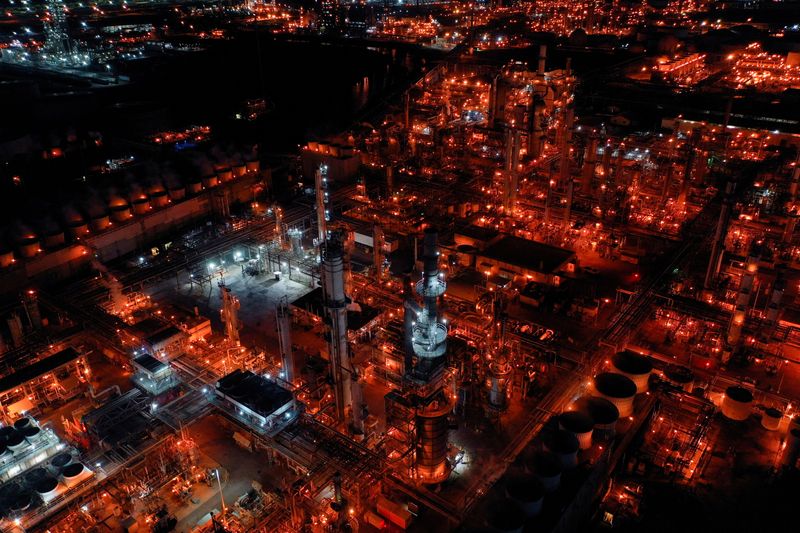Oil could slow declines as supply risks return to fore: Reuters poll
2022.09.30 07:37
[ad_1]

© Reuters. A nighttime view of Marathon Petroleum’s Los Angeles Refinery, which processes domestic & imported crude oil into gasoline, diesel fuel, and other refined petroleum products, in Carson, California, U.S., March 11, 2022. REUTERS/Bing Guan
By Bharat Gautam
(Reuters) – A recent oil price decline could slow in the last quarter of the year and into 2023 as focus shifts from concerns over a recessionary hit to demand to tightening global supply, a Reuters poll showed on Friday.
A survey of 42 economists and analysts forecast benchmark would average $100.45 a barrel this year, and $93.70 in 2023, down from estimates of $103.93 and $96.67 respectively in August, but well above current levels.
Brent is currently trading around $90, far short of the $120-$130 range reached earlier this year following Western sanctions on Moscow for its invasion of Ukraine, pulled down in part by the dollar’s ascent and expectations of an economic slowdown. [O/R] [USD/]
UBS analyst Giovanni Staunovo said recession fears may impact prices only in the very short term, with the focus shifting to supply issues thereafter.
“The EU ban on Russian waterborne crude and refined products is likely to result in supply disruptions in Russia and the end of the SPR (Strategic Petroleum Reserve) sales will remove further supply from the market,” Staunovo added.
The Ukraine crisis will continue to be decisive, especially following the European Union’s near-total ban on Russian crude from December, analysts said.
“We think that supply side issues will be worse than demand side issues unless there’s a severe global recession like the global financial crisis in 2008/09,” SEB analyst Ole Hvalbye said.
Also likely compounding supply risks, the Organisation of Petroleum Exporting Countries and allies, or OPEC+, could announce an output cut on Oct. 5.
Analysts estimated global oil demand would reach about 101-102 million barrels per day (bpd) in 2023, after averaging 98.5-101.5 million bpd this year, with the market also closely monitoring China’s COVID restrictions.
“Global oil demand forecasts should be written in pencil as the global economy has too many variables that no one has a handle on,” said Edward Moya, senior analyst with OANDA.
The poll forecast to average $95.73 a barrel in 2022 and $88.70 next year, versus the $99.91 and $92.48 consensus last month, but well above current price levels around $80.
[ad_2]
Source link








